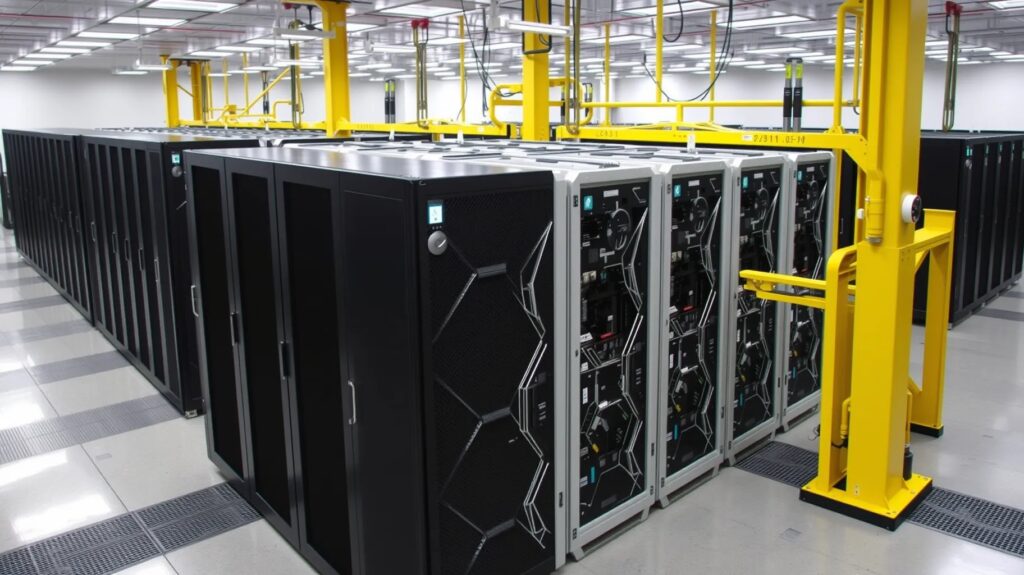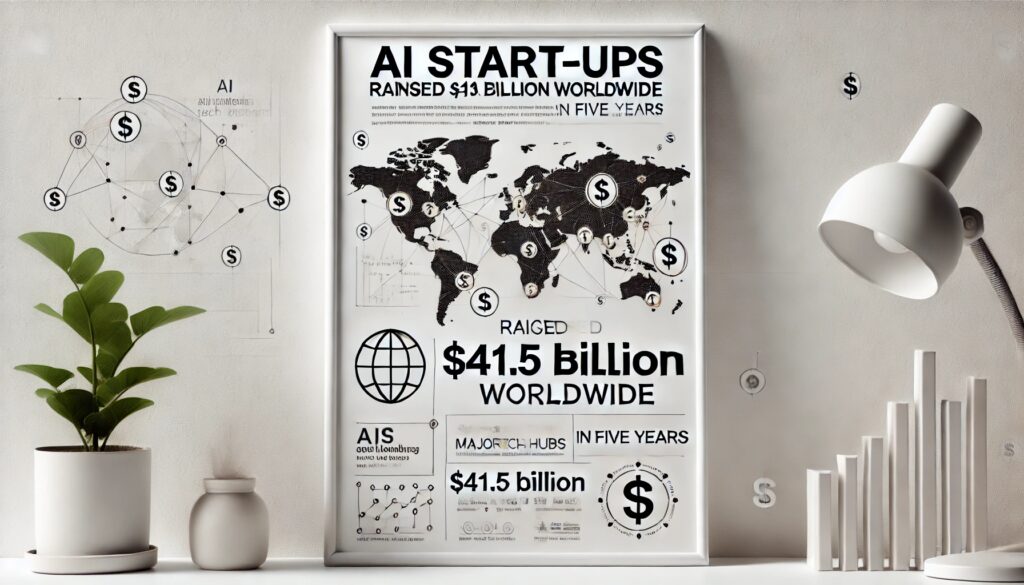
The Most Remarkable Advancements and Projects of Recent Years
Introduction
Artificial Intelligence (AI) has experienced rapid advancements, revolutionizing various fields and industries. Understanding these breakthroughs and their impacts is crucial. Let’s delve into some of the most notable advancements and projects in AI, exploring their applications, ethical concerns, and future potential.
DeepFake Technology

What is DeepFake Technology?
DeepFake technology leverages AI to create hyper-realistic but entirely fabricated videos and images. By analyzing countless data points, AI can seamlessly manipulate visual and audio content, making it appear genuine.
Historical Development and Key Milestones
- Early experimentation with AI-driven image manipulation
- Advances in neural networks enabling more sophisticated DeepFakes
- Integration into consumer applications
Applications of DeepFake Technology
- Entertainment and media: Creating realistic visual effects
- Education and training: Simulating scenarios for immersive learning
- Art and creativity: Crafting innovative digital artworks
Ethical Concerns and Potential Misuse
The potential for misuse, such as creating misleading videos, is significant. Ethical concerns revolve around privacy, consent, and the authenticity of digital content. Addressing these issues is crucial for responsible use.
Countermeasures and Detection Technologies
Efforts are underway to develop detection technologies to identify DeepFakes. Organizations are implementing AI-driven tools to discern authentic content from manipulated media, mitigating the risk of misinformation.
StyleGAN (Generative Adversarial Networks)
Introduction to GANs
Generative Adversarial Networks (GANs) consist of two neural networks: a generator and a discriminator. They work in tandem to create realistic images from random noise.
Development and Key Features of StyleGAN
StyleGAN, developed by NVIDIA, introduced a novel approach to image synthesis. Its ability to generate high-quality, realistic images has set a new benchmark in AI image generation.
Applications of StyleGAN
- Image generation and enhancement: Creating photorealistic images
- Art and design: Assisting artists in conceptualizing designs
- Facial recognition and avatar creation: Generating realistic avatars for virtual environments
Impact on the Creative Industry
StyleGAN has revolutionized the creative industry, providing artists and designers with powerful tools to enhance their creativity. Its applications span from fashion design to digital art.
Future Potential and Improvements
The future of StyleGAN includes refining its capabilities and exploring new applications. Continuous research aims to enhance image quality and reduce artifacts.
AlphaFold: Solving the Protein Folding Problem
Brief Recap of AlphaFold and Its Significance
AlphaFold, developed by DeepMind, has made significant strides in predicting protein structures. This breakthrough addresses a long-standing challenge in biology.
Key Milestones in AlphaFold’s Development
AlphaFold’s success in the CASP (Critical Assessment of protein Structure Prediction) competitions highlighted its predictive accuracy. Its achievements have been widely recognized in the scientific community.
Applications in Biology and Medicine
- Drug discovery: Accelerating the identification of potential drug targets
- Understanding disease mechanisms: Providing insights into diseases caused by protein misfolding
Broader Implications for Scientific Research
AlphaFold’s impact extends beyond drug discovery, influencing various fields of biological research. Its predictive power aids in understanding complex biological processes.
OpenAI GPT-3 and Natural Language Processing
Overview of GPT-3 and Its Capabilities
GPT-3, developed by OpenAI, is a state-of-the-art language model with 175 billion parameters. Its ability to generate human-like text has set new standards in natural language processing (NLP).
Historical Context and Development
Building on the success of its predecessors, GPT-3 represents a leap forward in NLP, capable of understanding and generating text with remarkable fluency.
Applications of GPT-3
- Content creation: Assisting writers in generating articles, stories, and more
- Chatbots and virtual assistants: Enhancing customer service interactions
- Language translation: Providing accurate and context-aware translations
Ethical Considerations and Potential for Misuse
The power of GPT-3 raises ethical concerns, including the potential for generating misleading information. Responsible use and strict guidelines are essential to mitigate these risks.
Future Developments in Natural Language Processing
Ongoing research aims to improve GPT-3’s capabilities and address its limitations. The future holds promising advancements in more nuanced and context-aware language models.
DALL-E: Generating Images from Text Descriptions
Introduction to DALL-E and Its Purpose
DALL-E, another innovation from OpenAI, generates images from textual descriptions. This AI model can create unique and imaginative visuals based on input text.
Key Features and Development Timeline
DALL-E combines the capabilities of GPT-3 with image generation techniques, producing highly creative and novel images.
Applications of DALL-E
- Creative industries: Assisting artists and designers in visualizing concepts
- Advertising and marketing: Generating unique visuals for campaigns
- Education and training: Creating illustrative content for educational materials
Challenges and Limitations
Despite its capabilities, DALL-E faces challenges in generating highly detailed images and understanding complex textual descriptions. Continuous improvement is necessary to enhance its performance.
Future Directions and Potential Improvements
Future advancements will focus on refining image quality and expanding the range of possible applications. Researchers aim to make DALL-E more versatile and reliable.
Reinforcement Learning and AlphaGo
Explanation of Reinforcement Learning
Reinforcement learning involves training AI agents to make decisions by rewarding desired behaviors. This approach has been pivotal in various AI applications.
Development and Achievements of AlphaGo
AlphaGo, developed by DeepMind, made headlines by defeating human champions in the game of Go. This achievement showcased the potential of reinforcement learning.
Applications of Reinforcement Learning Beyond Gaming
- Robotics: Enhancing the capabilities of autonomous robots
- Autonomous vehicles: Improving decision-making in self-driving cars
- Optimization problems: Solving complex logistical and operational challenges
Broader Impact on AI Research and Development
AlphaGo’s success has inspired further research in reinforcement learning, leading to advancements in various fields. Its impact on AI research is profound and far-reaching.
Tesla Autopilot and Autonomous Driving

Introduction to Tesla Autopilot
Tesla’s Autopilot is an advanced driver-assistance system that uses AI to enable autonomous driving capabilities.
Key Advancements and Milestones
Tesla Autopilot has made significant strides, including navigating highways, changing lanes, and parking autonomously. Continuous software updates improve its capabilities.
Applications in Transportation and Logistics
- Personal vehicles: Enhancing safety and convenience for drivers
- Commercial fleets: Optimizing delivery routes and reducing operational costs
Challenges and Regulatory Considerations
Autonomous driving technology faces regulatory hurdles and safety concerns. Ensuring the technology meets safety standards is crucial for widespread adoption.
Future of Autonomous Driving Technology
The future of autonomous driving includes fully self-driving cars and smarter transportation systems. Ongoing research and development aim to overcome existing challenges.
AI in Healthcare: Early Diagnosis and Personalized Treatment
Overview of AI Applications in Healthcare
AI is revolutionizing healthcare by enabling early diagnosis and personalized treatment plans.
Notable Projects and Advancements
- IBM Watson Health: Utilizing AI for oncology and genomics
- Google Health’s AI Initiatives: Developing AI tools for medical imaging and disease prediction
Impact on Early Diagnosis and Personalized Treatment
AI enhances the accuracy of early diagnosis and tailors treatment plans to individual patients, improving outcomes and reducing costs.
Ethical and Privacy Considerations
Ensuring patient data privacy and addressing ethical concerns are paramount. Responsible use of AI in healthcare is essential for maintaining trust.
Future Potential and Ongoing Research
The future of AI in healthcare includes advancements in telemedicine, robotic surgery, and predictive analytics. Continued research will unlock new possibilities.
AI for Climate Modeling and Environmental Sustainability
Introduction to AI Applications in Climate Modeling
AI is playing a pivotal role in understanding and mitigating climate change.
Notable Projects and Their Contributions
- ClimateAI: Using AI to predict and mitigate climate risks
- Google Earth Engine: Leveraging AI for environmental monitoring
Impact on Environmental Sustainability
AI helps in modeling climate patterns, optimizing energy use, and improving resource management, contributing to sustainability efforts.
Challenges and Future Directions
Addressing the complexity of climate systems and ensuring accurate predictions are ongoing challenges. Future research aims to enhance AI’s capabilities in this domain.
AI in Creative Arts: Music, Art, and Literature

Overview of AI’s Role in Creative Industries
AI is transforming the creative arts, enabling new forms of expression and collaboration.
Notable Advancements and Projects
- AI-generated music: Projects like AIVA and Amper Music create original compositions.
- AI in visual arts: Tools like DeepArt and RunwayML assist artists in generating unique visuals.
- AI in literature: GPT-3 applications in writing stories, poetry, and more.
Impact on Artists and Creators
AI provides artists with powerful tools to enhance their creativity, leading to new artistic possibilities and collaborations.
Ethical Considerations and Future Potential
Ensuring the authenticity of AI-generated art and addressing copyright issues are critical. The future holds exciting potential for AI-enhanced creativity.
Conclusion
In summary, these notable advancements in AI are revolutionizing various fields, from healthcare to creative arts. The ongoing research and ethical considerations will shape the future of AI, ensuring that these technologies are used responsibly and effectively. Staying informed and engaged with these developments is essential as we navigate the exciting landscape of artificial intelligence.
References
For further reading and detailed information, check out the DeepMind’s AlphaFold page and explore resources on the Protein Data Bank.





